
Majestic Colca Canyon: Peru's Natural Wonder
Discover Colca Canyon: A stunning Peruvian canyon offering dramatic landscapes, traditional culture, and wildlife encounters, including the majestic Andean condors.
Colca Canyon, located in southern Peru, is one of the deepest canyons in the world, nearly twice as deep as the Grand Canyon. This breathtaking natural wonder offers stunning vistas, unique wildlife, and a rich cultural heritage. The canyon is a paradise for nature lovers and adventure seekers alike. Visitors can immerse themselves in the traditional way of life of the local indigenous people, who have inhabited the area for centuries. The terraced fields that line the canyon walls are a testament to their ingenuity and agricultural practices. These terraces are still in use today, producing crops like maize and quinoa. Colca Canyon is also famous for its Andean condors, which can be seen soaring majestically over the canyon. The Cruz del Condor viewpoint is the best place to witness these magnificent birds. Hiking trails of varying difficulty levels offer opportunities to explore the canyon's depths, passing through picturesque villages and breathtaking landscapes. Hot springs, such as those in Chivay, provide a relaxing way to end a day of exploration. The area's vibrant festivals and local markets offer a taste of Andean culture, with colorful textiles, handmade crafts, and traditional music and dance.
Local tips in Colca Canyon
- Best time to visit is during the dry season from May to October for clear skies and optimal hiking conditions.
- Start your hike early in the morning to avoid the midday heat and to catch the condors in flight.
- Bring layers of clothing as temperatures can vary significantly between day and night.
- Stay hydrated and acclimate to the altitude before embarking on strenuous hikes.
- Consider hiring a local guide to enrich your experience with historical and cultural insights.
Majestic Colca Canyon: Peru's Natural Wonder
Colca Canyon, located in southern Peru, is one of the deepest canyons in the world, nearly twice as deep as the Grand Canyon. This breathtaking natural wonder offers stunning vistas, unique wildlife, and a rich cultural heritage. The canyon is a paradise for nature lovers and adventure seekers alike. Visitors can immerse themselves in the traditional way of life of the local indigenous people, who have inhabited the area for centuries. The terraced fields that line the canyon walls are a testament to their ingenuity and agricultural practices. These terraces are still in use today, producing crops like maize and quinoa. Colca Canyon is also famous for its Andean condors, which can be seen soaring majestically over the canyon. The Cruz del Condor viewpoint is the best place to witness these magnificent birds. Hiking trails of varying difficulty levels offer opportunities to explore the canyon's depths, passing through picturesque villages and breathtaking landscapes. Hot springs, such as those in Chivay, provide a relaxing way to end a day of exploration. The area's vibrant festivals and local markets offer a taste of Andean culture, with colorful textiles, handmade crafts, and traditional music and dance.
When is the best time to go to Colca Canyon?
Iconic landmarks you can’t miss
Mirador Cruz del Cóndor
Experience breathtaking views and the majestic flight of condors at Mirador Cruz del Cóndor, a must-visit observation deck in Peru's Colca Canyon.

Plaza De Armas De Chivay
Discover the vibrant Plaza De Armas De Chivay, a cultural hub where Andean traditions meet breathtaking landscapes in the heart of Chivay.

Sangalle
Discover Sangalle, the breathtaking oasis in Colca Canyon, where lush landscapes meet serene relaxation and rich cultural experiences await.

Las Casitas, A Belmond Hotel, Colca Canyon
Discover the serene beauty of Colca Canyon at Las Casitas, A Belmond Hotel, where luxury meets nature in an unforgettable Peruvian escape.

Uyo Uyo
Explore the breathtaking archaeological site of Uyo Uyo, the 'Little Machu Picchu of Colca', and uncover the secrets of ancient Peru.
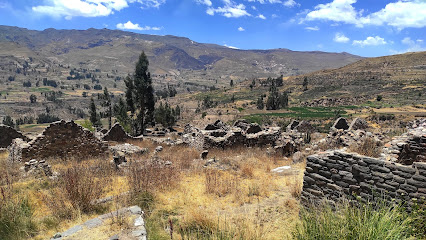
Rio Colca
Discover the breathtaking beauty of Rio Colca, Peru's stunning river known for its deep canyons, rich wildlife, and cultural heritage.

Colca Zip-Lining
Experience the thrill of zip-lining over breathtaking landscapes in Colca Canyon, Peru's adventure sports paradise.

Cañón de Cotahuasi
Explore the breathtaking landscapes and rich culture of Cañón de Cotahuasi, Peru's hidden canyon gem, perfect for adventurous travelers.

Área Intangible del Estado en Pasaje Cañon del Colca
Discover the beauty and serenity of Área Intangible del Estado in Pasaje Cañon del Colca, a peaceful park in La Molina, Peru.

Unmissable attractions to see
Mirador Cruz del Cóndor
Discover the breathtaking views and majestic Andean condors at Mirador Cruz del Cóndor, a premier observation deck in Peru's stunning Colca Canyon.

Plaza De Armas De Chivay
Explore the lush beauty and cultural richness of Plaza De Armas De Chivay, the heart of Chivay, Peru, surrounded by stunning Andean landscapes.
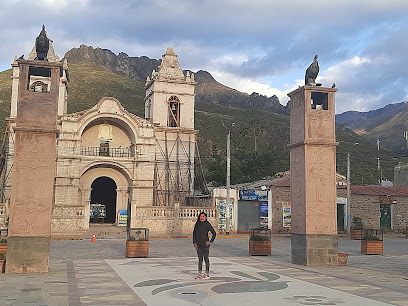
Uyo Uyo
Uncover the rich history of ancient civilizations at Uyo Uyo, an archaeological gem set in Peru's stunning landscapes.

Puente Inca
Discover the breathtaking Puente Inca, an architectural marvel in the heart of Colca Canyon, blending natural beauty with rich Inca heritage.

Planetarium and Observatory Colca
Explore the cosmos at the Planetarium and Observatory Colca, where stargazing meets educational fun in the heart of Chivay, Peru.

Iglesia Purisima Concepción de Lari - Catedral del Colca
Explore the breathtaking Iglesia Purisima Concepción de Lari, a colonial gem in Chivay, Peru, showcasing rich history and stunning architecture.

Geiser de Pinchollo
Discover the breathtaking Geiser de Pinchollo in Cabanaconde, a stunning natural wonder showcasing geothermal activity amidst the Andes' beauty.

Mirador de Achachihua
Experience unparalleled views and natural beauty at the Mirador de Achachihua, a top destination for travelers in Bolivia.

MIRADOR WAYRACPUNKU
Experience breathtaking views and rich Incan heritage at Mirador Wayrapunku, a must-visit tourist attraction in Peru's Sacred Valley.

Catarata panahua
Experience the serene beauty of Catarata Panahua, a breathtaking waterfall in Peru, surrounded by lush nature and stunning views, perfect for adventurers and photographers.

FORTALEZA CHIMPA
Explore the majestic Fortaleza Chimpas in Madrigal, Peru – a stunning tourist attraction blending ancient history with breathtaking natural landscapes.

TAGRE
Experience the natural beauty and vibrant culture of Tagre, a hidden gem in Peru that offers unforgettable adventures and authentic local experiences.
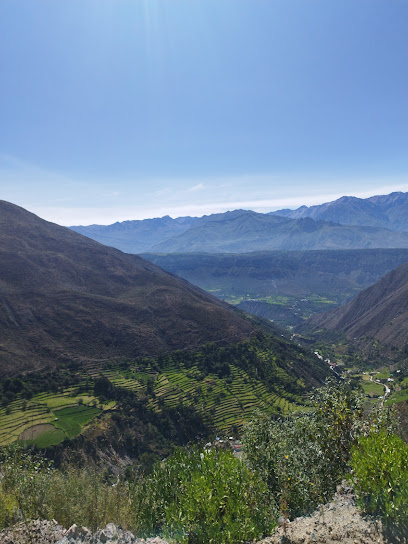
ANEXO DE YASO
Experience the serene beauty of ANEXO DE YASO, a hidden tourist attraction in Viraco, blending nature and culture for a perfect getaway.
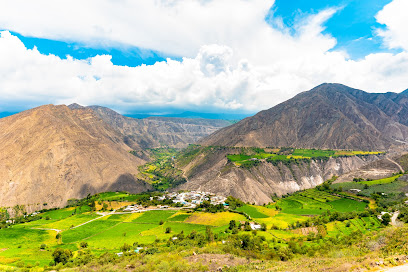
Tumbas de Yuraq Qaqa
Explore Tumbas de Yuraq Qaqa, an extraordinary archaeological site in Peru that reveals the rich history and stunning landscapes of the ancient Andean culture.

Chininea Hanging Grave
Explore the Chininea Hanging Grave, an ancient burial site carved into cliffs near Yanque, Peru, offering breathtaking views and rich cultural heritage.

Essential places to dine
Chicha por Gaston Acurio
Savor authentic Peruvian cuisine at Chicha por Gaston Acurio in Arequipa, where tradition meets modern culinary artistry.

13 Monjas
Discover the essence of Peruvian cuisine at 13 Monjas - where tradition meets innovation in Arequipa's vibrant culinary scene.

RESTAURANT URINSAYA
Discover authentic Peruvian cuisine at Restaurant Urinsaya in Chivay - a culinary experience blending tradition and flavor.

Rest LOS PORTALES DE CHIVAY
Discover authentic Peruvian cuisine at Los Portales de Chivay – where every dish tells a story from the Andes.

Pachamama Home
Discover comfort and local flavors at Pachamama Home in Cabanaconde—your gateway to Colca Canyon adventures.

Restaurant Incafe
Savor authentic Peruvian cuisine at Restaurant Incafe in Colca Canyon – a must-visit for food lovers exploring Peru's rich culinary heritage.

Restaurant Turístico Colca
Savor authentic Peruvian cuisine amidst breathtaking views at Restaurant Turístico Colca in Chivay.

Restaurante Turístico Q'apaqñan
Experience authentic Peruvian cuisine at Restaurante Turístico Q'apaqñan in Chivay, where every dish tells a story of tradition and flavor.

Restaurant Turístico Misti Wasi
Experience authentic Peruvian cuisine at Restaurant Turístico Misti Wasi in Chivay—where flavor meets tradition amidst stunning landscapes.

Restaurant Urpicha Del Colca
Discover authentic Peruvian flavors at Restaurant Urpicha Del Colca in Yanque – a culinary delight near the stunning Colca Canyon.

El Balcón de Don Zacarías
Experience authentic Peruvian cuisine at El Balcón de Don Zacarías in Arequipa's picturesque Plaza de Armas.

MARAY carnes y pizzas a la piedra volcánica
Discover MARAY: A Volcanic Stone Cooking Experience with Authentic Peruvian Flavors in Arequipa.

Mikuna Wassi
Discover authentic Peruvian cuisine in Cabanaconde at Mikuna Wassi - a must-visit for every traveler exploring Colca Canyon.

Sabores Andinos Colca Restaurant
Experience authentic Peruvian cuisine with stunning views at Sabores Andinos Colca Restaurant in Yanque.

La Granja del Colca
Experience breathtaking views and local hospitality at La Granja del Colca – your perfect retreat by Colca Canyon.
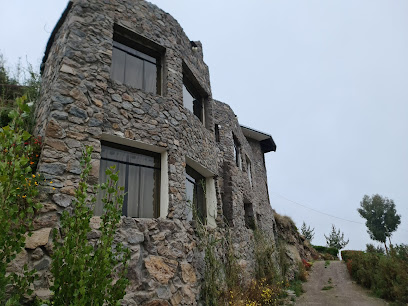
Markets, malls and hidden boutiques
Colca Canyon
Explore the awe-inspiring Colca Canyon, a natural wonder in Peru, featuring stunning landscapes and rich cultural heritage.

Colca Zip-Lining
Experience the thrill of zip-lining in the breathtaking Colca Canyon, combining adventure sports with stunning natural beauty.

Galería ARTES DEL COLCA art & souvenirs
Immerse yourself in the artistic heritage of the Colca Valley at ARTES DEL COLCA, a premier destination for unique Peruvian art and souvenirs.

Love Store Chivay
Explore a treasure trove of authentic Peruvian handicrafts at Love Store Chivay, where every purchase tells a story of culture and artistry.

Colcalac
Experience the rich flavors of local dairy at Colcalac, Chivay's premier dairy store, renowned for its artisanal cheeses and creamy delights.

Made In Colca
Explore the essence of Andean culture at Made In Colca, a unique clothing store in Chivay offering artisanal fashion and accessories.
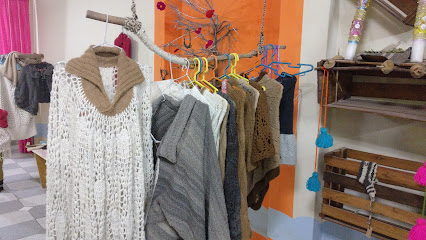
Pintado cool
Discover unique Peruvian crafts and souvenirs at Pintado Cool in Cabanaconde, a store that celebrates local artistry and culture.

Bordados del Colca Inty
Explore the vibrant craftsmanship of traditional Andean textiles at Bordados del Colca Inty in Chivay, a must-visit for cultural enthusiasts.

Dery ternos & vestido
Explore the essence of Peruvian fashion at Dery Ternos & Vestido, a boutique in Chivay showcasing exquisite handmade clothing and accessories.

Comercial Terezita
Explore the vibrant fashion of Peru at Comercial Terezita, your premier clothing destination in Chivay, offering unique textiles and local artistry.

Tienda de Irene
Discover Tienda de Irene in Viraco, Arequipa - Your Gateway to Authentic Local Flavors and Artisan Goods.

Ms Mocca Moda Y Estilo
Discover unique Peruvian fashion at Ms Mocca Moda Y Estilo in Chivay, where local culture meets contemporary style.

Dama Cabana
Discover the vibrant clothing and rich cultural heritage at Dama Cabana, a must-visit clothing store in Cabanaconde, Peru.

Adria
Discover Adria, a charming boutique in Caylloma, where local craftsmanship meets vibrant culture for a unique shopping experience.

Mr.Benic Store / Mujer Bonita
Explore the charm of Chuquibamba at Mr.Benic Store, where local craftsmanship meets unique shopping experiences in a delightful boutique.

Essential bars & hidden hideouts
Pachamama Home
Experience the charm of Pachamama Home in Cabanaconde - where comfort meets exceptional Peruvian cuisine in a stunning natural setting.

ARCAS RESTOBAR
Discover the vibrant flavors of Peru at ARCAS RESTOBAR, a gastropub in Chivay offering delicious dishes and a lively atmosphere.

McELROY'S Irish pub
Experience the flavors of Ireland in the heart of Chivay at McELROY'S Irish Pub, a perfect blend of local charm and hearty grilled dishes.

Muspay Quilla
Discover Muspay Quilla: A vibrant bar in Chivay offering a lively atmosphere and a delightful selection of drinks and local culture.

Bodega Don Berly
Discover Bodega Don Berly in Mamas for a unique bar experience featuring local drinks and a cozy atmosphere rich in Peruvian culture.
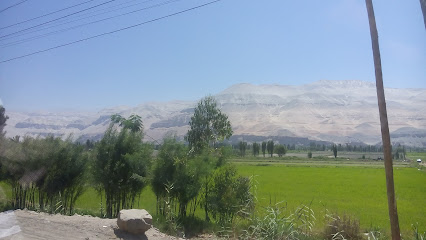
Las Terrazas
Discover the flavors of Peru at Las Terrazas, a scenic restaurant in Cabanaconde offering authentic dishes and breathtaking mountain views.

Discoteca Olympian
Discover the ultimate nightlife experience at Discoteca Olympian in Chivay – where great food, dancing, and vibrant culture meet.

Discoteca Muya
Discover the pulse of Chivay's nightlife at Discoteca Muya, a disco club and gastropub that promises unforgettable nights filled with music and dance.

papachoauca bar
Discover the lively spirit of Pinchollo at Papachoauca Bar, where live music and local culture come together for an unforgettable experience.

DiscoCharro
Discover DiscoCharro: A Culinary Gem in Arequipa's Gastronomic Scene, Offering Delicious Grills and a Lively Atmosphere.

Rustika Resto Bar Disco
Discover the lively Rustika Resto Bar Disco in Chivay, where delicious Peruvian cuisine meets vibrant nightlife for an unforgettable experience.

Moon Disco
Discover Chivay's nightlife at Moon Disco, where music, dance, and camaraderie come together for an unforgettable experience.

La Catedral Music Hall
Discover the heart of Chivay at La Catedral Music Hall, where delicious grill cuisine meets vibrant local music for an unforgettable experience.
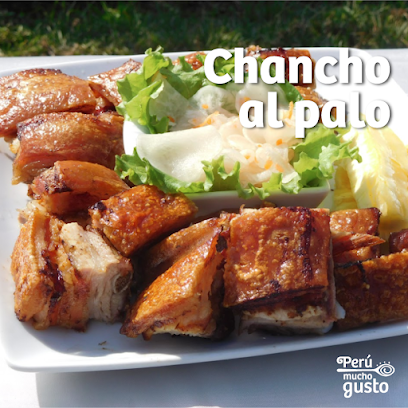
Disco bar
Unleash your night at the Disco Bar in Anex Pinchollo, where music, dancing, and vibrant energy come together for an unforgettable experience.

Puccq'io Bar
Discover the perfect blend of local flavors and scenic views at Puccq'io Bar in the heart of Yanque, Colca Canyon.

Local Phrases about Colca Canyon
-
- HelloQamchu
[kam-choo] - GoodbyeAllinllachu
[al-leen-ya-choo] - YesArí
[a-ree] - NoManam
[ma-nam] - Please/You're welcomePor favor
[por fa-vor] - Thank youSulpayki
[sul-pai-kee] - Excuse me/SorryDispénsame
[dis-pen-sa-me] - How are you?Imaynallayki?
[ee-mai-nyal-lai-kee] - Fine. And you?Sumaq. Chaynallayki?
[soo-mak. chai-nyal-lai-kee] - Do you speak English?Inglispariyki?
[ing-lees-pa-ree-kee] - I don't understandMananiyki
[ma-na-nee-kee]
- HelloQamchu
-
- I'd like to see the menu, pleaseMenukuna kashanki, kay?
[men-oo-koo-na ka-shan-kee, kai?] - I don't eat meatKarnirikunawanmi
[kar-nee-ree-koo-na-wan-mi] - Cheers!¡Salud!
[sa-lood] - I would like to pay, pleasePagaranki, kay?
[pa-ga-ran-kee, kai?]
- I'd like to see the menu, pleaseMenukuna kashanki, kay?
-
- Help!¡Ayuuda!
[ai-yoo-da] - Go away!¡Imaynay!
[ee-mai-nyai] - Call the Police!Pulisiyta kashanki!
[poo-lee-see-ta ka-shan-kee] - Call a doctor!Wakichiwayta kashanki!
[wa-kee-chee-wai-ta ka-shan-kee] - I'm lostUripawayki
[oo-ree-pa-wai-kee] - I'm illMancharispa
[man-cha-ree-spa]
- Help!¡Ayuuda!
-
- I'd like to buy...Rikurkachiy
[ree-kur-ka-chee] - I'm just lookingÑawi kachun
[nya-wee ka-choon] - How much is it?Ichkayta?
[eech-kai-ta] - That's too expensiveKayta munanki
[kai-ta moo-nan-kee] - Can you lower the price?Chayta munanki?
[chai-ta moo-nan-kee]
- I'd like to buy...Rikurkachiy
-
- What time is it?Imatatas?
[ee-ma-ta-tas] - It's one o'clockJusk'apachas
[hoosk-a-pa-chas] - Half past (10)Iskay pachas
[ees-kai pa-chas] - MorningP'unchay
[poon-chai] - AfternoonCh'uspi
[choos-pee] - EveningTuta
[too-ta] - YesterdayHuk p'unchay
[hook poon-chai] - TodayKuy p'unchay
[koo-ee poon-chai] - TomorrowMach'ay
[mach-eye] - 1Huk
[hook] - 2Iskay
[ees-kai] - 3Kimsa
[keem-sa] - 4Tawa
[ta-wa] - 5Pichqa
[peech-ka] - 6Soqta
[sok-ta] - 7Qanchis
[kan-chees] - 8Pusaq
[poo-sak] - 9Isqun
[ees-koon] - 10Chunqa
[choon-ka]
- What time is it?Imatatas?
-
- Where's a/the...?Maynin...?
[mai-neen] - What's the address?Imatataq...
[ee-ma-ta-tak] - Can you show me (on the map)?Qhawayta rikurkanki?
[ka-wai-ta ree-kur-kan-kee] - When's the next (bus)?Kay p'ikinchay...
[kai pee-keen-chai] - A ticket (to ....)Chinkana (....)
[cheen-ka-na]
- Where's a/the...?Maynin...?
History of Colca Canyon
-
Before the arrival of the Spanish, the Colca Canyon was inhabited by the Collagua and Cabana peoples. These pre-Inca civilizations were adept at agriculture, constructing extensive terraces along the canyon walls to cultivate crops like maize and quinoa. Their advanced irrigation systems are still visible today, demonstrating their ingenuity and deep understanding of the local environment.
-
The Inca Empire expanded into the Colca Canyon region in the 15th century, incorporating it into their vast territory. The Incas introduced their administrative and agricultural techniques, further developing the region's infrastructure. They built roads and waystations, known as tambos, to facilitate travel and communication across the challenging terrain.
-
The Spanish arrived in the 16th century, bringing significant changes to the Colca Canyon. The region was officially claimed by the Spanish Crown, and the indigenous populations were subjected to colonial rule. The Spanish introduced Christianity, building churches and converting the local people. Many of the colonial-era churches in the Colca Valley are still standing, showcasing a blend of Spanish and indigenous architectural styles.
-
The Andean condor, a symbol of power and freedom, has always held a significant place in the local culture. According to legend, the condor is a sacred messenger that connects the earthly world with the heavens. The Cruz del Condor viewpoint in Colca Canyon offers a magnificent opportunity to witness these majestic birds soaring gracefully, a sight that has inspired awe for centuries.
-
In recent decades, Colca Canyon has become a popular destination for tourists seeking adventure and cultural experiences. The Peruvian government and local communities have worked together to develop infrastructure while preserving the region's natural beauty and historical significance. This balance between development and conservation has made Colca Canyon a model for sustainable tourism in Peru.
-
Colca Canyon is rich in cultural traditions that have been passed down through generations. Festivals such as the Wititi dance, which has been recognized by UNESCO as Intangible Cultural Heritage, are celebrated with vibrant costumes and music. These cultural expressions offer a glimpse into the enduring heritage and community spirit of the region's inhabitants.
Colca Canyon Essentials
-
Colca Canyon is located in the Arequipa region of Peru. The nearest major city is Arequipa, which has an international airport (Rodríguez Ballón International Airport). From Arequipa, you can take a bus or a private car to the town of Chivay, which is the gateway to Colca Canyon. The journey by road typically takes around 4 to 5 hours. There are several bus companies that operate daily services from Arequipa to Chivay. Alternatively, you can arrange for a guided tour that includes transportation.
-
Within Colca Canyon, transportation options include local buses, taxis, and organized tours. Local buses run between the main towns such as Chivay, Yanque, and Cabanaconde. Taxis are available but less common, and it is advisable to negotiate the fare in advance. For a more in-depth exploration, consider hiring a local guide or joining an organized tour, which can provide transportation as well as insightful information about the area.
-
The official currency in Peru is the Peruvian Sol (PEN). Credit cards are accepted in most hotels, restaurants, and shops in larger towns like Chivay, but it is advisable to carry cash, especially when traveling to more remote areas. ATMs are available in Chivay, but it is wise to withdraw sufficient cash in Arequipa before traveling to the canyon to ensure you have enough funds for your trip.
-
Colca Canyon is generally a safe destination for tourists. However, as with any travel destination, it is important to take standard precautions. Avoid walking alone at night in unfamiliar areas and keep an eye on your belongings in crowded places. While there are no specific high-crime areas targeting tourists, it is always best to stay vigilant and aware of your surroundings.
-
In case of emergency, dial 105 for police assistance and 116 for medical emergencies. The main medical facility in the region is the hospital in Chivay. It is recommended to have travel insurance that covers medical emergencies. For minor health issues, there are pharmacies in Chivay where you can purchase over-the-counter medications. Always inform your hotel or guide about any emergencies you encounter.
-
Fashion: Do dress in layers as the weather can vary greatly throughout the day. Comfortable hiking boots are essential for exploring the canyon. Avoid wearing overly revealing clothing. Religion: Do respect local customs and traditions. When visiting churches, dress modestly and remove your hat. Public Transport: Do be respectful and give up your seat to elderly passengers. Don’t speak loudly or play loud music. Greetings: Do greet people with a friendly handshake or a nod. A simple 'Hola' or 'Buenos días' is always appreciated. Eating & Drinking: Do try local delicacies such as alpaca meat and quinoa dishes. Don’t refuse food offered by locals, as it is considered impolite.
-
To experience Colca Canyon like a local, visit the local markets where you can buy fresh produce and traditional Peruvian goods. Engage with locals, as they are often friendly and willing to share stories about their culture and heritage. Don’t miss the traditional dances and festivals, which offer a glimpse into the rich cultural tapestry of the region. For a unique experience, take a dip in the natural hot springs in the area, which are popular with locals and offer a relaxing break after a day of hiking.
Nearby Cities to Colca Canyon
-
Things To Do in Puno
-
Things To Do in Cusco
-
Things To Do in Machu Picchu
-
Things To Do in Tacna
-
Things To Do in Copacabana
-
Things To Do in Ayacucho
-
Things To Do in Arica
-
Things To Do in Ica
-
Things To Do in La Paz
-
Things To Do in Huancayo
-
Things To Do in Iquique
-
Things To Do in Lima
-
Things To Do in Cochabamba
-
Things To Do in Uyuni
-
Things To Do in Potosi










